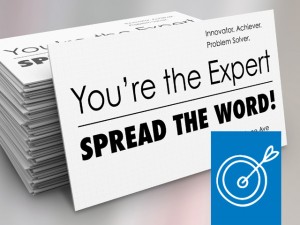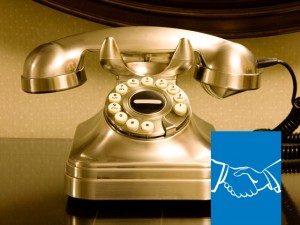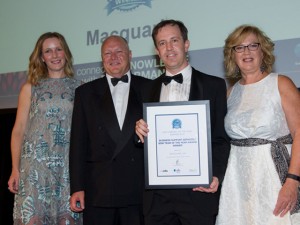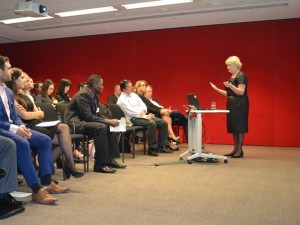This is a great article from well-known adviser and now industry consultant, Chris Unwin. Chris talks about the 'dos and don’ts' for advisers when on the telephone, and he leaves you with ten golden rules to follow.
At what stage of the initial advice process is the majority of potential new business lost? At the initial appointment making stage, of course! But the problem is that, instead of viewing this as ‘lost business’, we just view it as a ‘lost appointment’. How much more attention would we give to fine tuning our telephone technique if we regarded the failure to make a first appointment with a potential new client as business that has slipped through our fingers?
The fact remains that, despite the amount of emails and alternative modes of communication being used today, the majority of first appointments with potential clients are still being made over the phone, and therefore this remains the first opportunity for business to be won or lost.
The purpose of creating a checklist of ‘dos and don’ts’ on the phone is to maximise the conversion rate from invitations extended to appointments made, thereby dramatically increasing the chances of securing a new client.
Before we look at the ‘golden rules’, it is crucial that we appreciate what will be, by far, the biggest barrier to achieving a positive outcome to any prospecting call. How we are coming across to the person on the other end of the phone (our voice tonality) will be five or six times more influential on the outcome of the call than what we are actually saying (the content). And our voice tonality will reflect our mindset when making the call. This will determine whether we are sending positive vibes (‘warm fuzzies’) or negative vibes (‘cold pricklies’) down the phone. If you are not in a positive frame of mind when you’re about to make a prospecting call, then don’t bother making the call. You will simply be burning a potential client.
To ensure a positive mindset when prospecting, we need to create a positive perception of what we are about to do, as well as a total conviction that there is absolutely no downside to the recipient of our call in making an appointment. Consider the following description of what we’re about to do when making a prospecting call:
We are about to extend an invitation to someone to meet with us on a totally non-committal basis, for just 45 minutes to an hour, to see if we can help them in any way. In a worst case scenario, if we can’t be of any assistance, then they will have had the benefit of a professional financial health check at no cost whatsoever.
Rule 1
Hence, Rule 1, before you even pick up the phone is: Smile down the phone.
Rule 2
Stand up and move around.
This rule also takes place before you pick up the phone, and there are two reasons why it is so important. The first reason is based on medical science and the second reason should make it impossible to make a prospecting call sitting down.
the majority of first appointments with potential clients are still being made over the phone
I’m sure you would agree that, if you are sitting down in a chair, then relatively speaking you are physically less agile than if you were standing up and moving around. But did you realise that it has been proven that you are also mentally less agile? Given that most of the people you will be speaking to will themselves be sitting down, this will give you an immediate edge.
More importantly, however, I don’t believe it should be possible to make a prospecting call sitting down if the result of the call matters to you. You see, if making the appointment matters to you, then there will be something called adrenalin pumping in your system. And if you have adrenalin coursing through your veins, it’s impossible to remain seated and motionless in your chair – you must be standing up and on the move!
Rule 3
Never argue, and avoid any confrontation.
However illogical and unreasonable people may be sometimes, most people need to find a justification for saying ‘no’ to a reasonable request. Given that all you are doing is inviting them to meet with you on a totally non-committal basis to see if you can help them (i.e. nothing ventured nothing gained), it becomes very hard to justify saying ‘no’ unless they can create a problem with you, and the most common way in which you can open the door for them in this way is to either disagree with something they say or suggest that they are wrong about something. Therefore, even if they say something that is clearly incorrect, your response should be ‘I understand exactly where you’re coming from; however, let me ask you a question…’ And hopefully the answer to your question will show them why what they have said is incorrect.
Rule 4
Expect to handle two or three objections before making the appointment.
Did you realise that it is human nature to resist commitment, especially when it is commitment to time or money? This is a bit inconvenient for us, since when we are looking to make an appointment with someone we are seeking a time commitment from them. And when we are looking for them to come on board as a client, we are looking for a commitment of their money! So, the message is that we should expect to meet with some resistance when seeking to make an appointment, and indeed we should be concerned if we end up making an appointment without having to overcome any resistance. If this is the case, we are probably the only one putting the appointment in our diary!
The key is to have a stock standard response to the most common objections (and there are only maybe four or five objections that people can come up with to making an appointment) and to deliver it in a matter of fact way with a smile on your face, ending up with the question: ‘So, have you got your diary handy?’ Overcoming a couple of objections in this way will have the effect of separating you from the pack (as most people give up at the first sign of resistance and certainly after the second objection). The fact that you are still hanging in there with a smile on your face will often have the effect of turning what was suspicion on their part into curiosity, along the lines of ‘maybe this person might actually be worth meeting’.
Rule 5
Make a call that you would like to receive.
When you finish a call that has not resulted in an appointment, ask yourself the question: ‘Would I have made an appointment to meet with me as a result of that call?’, and if the truthful answer is ‘probably not’, then we can’t really expect someone else to have agreed to an appointment.
Then consider what ingredient in a phone call is most likely to produce a positive vibe. Certainly one such ingredient is laughter. Just because you’re working as a professional financial planner doesn’t mean that you have to be dull and boring! Assuming you have a sense of humour, don’t feel that you have to suppress it because you work in financial services. Remember that you are trying to motivate someone to want to meet with you, and they are far more likely to want to put a face to a name if you have made them laugh on the phone.
Rule 6
Speak up; speak clearly and at a moderate pace.
One of the biggest challenges we face in this day and age when communicating with someone on the phone (especially in their workplace) is competing with all of the potential distractions that could be vying for their attention – computer screens, iPads, TV screens, work colleagues, etc. It is absolutely crucial, therefore, that you do everything you can to get their attention up front and then keep their attention for the duration of the call. That is why it is so important that you speak up from the word go – to grab their attention at the start of the call, and then be sure to speak clearly and at a moderate pace.
People who are not confident about what they are saying will typically mumble, so you can’t hear what they are saying, or they will speak too fast, which makes them unintelligible. This is why you must speak loudly and reasonably slowly, which will maximise your chances of winning their attention and keeping it throughout.
The key is to have a stock standard response to the most common objections
Rule 7
Only sell an appointment.
You need to make sure that you are not drawn into trying to sell anything other than the opportunity to meet with you on a non-committal basis over the phone. Because people need to have some justification for saying ‘no’, they will want to try to get you to be more specific about how exactly you may be able to help them. And as soon as you start talking about any specific products or services that you can offer, they will have the necessary hook on which to hang an expression of disinterest. For as long as the invitation simply remains an opportunity to meet with you to explore how you might be able to help them, they have nothing specific that justifies turning down your invitation, and you cannot be specific about what products or services may be relevant to them until you have had the opportunity to meet with them – hence the call.
Rule 8
Be enthusiastic!
There is nothing more contagious than enthusiasm – it rubs off on people and motivates them to want to meet you in person. After all, what don’t you have to be enthusiastic about? You have an amazing range of fantastic products, strategies and services that can enable people to achieve all their lifestyle objectives, not to mention the once-in-a-lifetime opportunity to meet with you and have the benefit of your top quality service on an ongoing basis.
Rule 9
Be assumptive.
Anything you can do to make it easier for your prospective client to say ‘yes’ to your invitation to meet with you and come on board as your client must be in their best interest, and being assumptive will go a long way towards achieving this end result. When you dial their number, are you thinking: ‘I bet this person won’t want to meet with me and will give me all sorts of objections, but I’m going to make the call anyway’, or are you thinking: ‘Obviously this person is going to want to meet with me – it’s just a matter of arranging a suitable time!’ If it’s the latter, then you will be inclined to use words like ‘assuming’ or ‘when’ rather than ‘if’, and this in turn will have a major influence on how the other person reacts.
Rule 10
Waterproof the appointment.
Have you ever had first appointments in your diary that you never got to meet? Waterproofing the appointment is designed to ensure that you are not the only person putting the appointment in the diary and therefore that it is real. It will also make sure the other person realises that you are extremely busy and that you have lots of other clients who need to see you. Before signing off, say something like: ‘Just before you go, can I ask one favour of you? Obviously having set this time aside for you, I am not going to arrange to see anyone else at that time, so unavoidable commitments aside, can we treat this as a definite business appointment?’
Having secured their agreement to this, continue with: ‘Great! If something unavoidable does crop up, could you be sure to let me know as soon as you can, firstly so we can reschedule our appointment, but also so that I can put another client who needs to see me into that time slot? Would you do that for me – I’d really appreciate it?’ This will have the effect of enhancing your professionalism as well as potentially weeding out fictitious appointments.
When I first started in the business some 37 years ago, I had a similar checklist of ‘dos and don’ts’ on the telephone. It was extremely helpful to scan it whenever I failed to make an appointment to see what I did on that call that I shouldn’t have done, and also what I didn’t do that I should have done. And it was amazing how often I could identify the reason for not making the appointment. If you use this checklist in the same way, I guarantee it won’t be long before you can dispense with it, because doing what you should do, and not doing what you shouldn’t do, will become second nature and force of habit.
Chris is running full day Risk Workshops around the country in June. Check the riskinfo Calendar for dates and you can also contact Chris for more details.

Chris Unwin is a financial adviser of 37 years standing and has been a specialist risk adviser for the last 22 years. His training and consulting business has operated for 12 years and it specialises in helping advisers across the full spectrum of experience with their client engagement skills, both in the risk advice specific space as well as in the more generic soft skills space.
Contact or follow the author: Telephone: +61 417 281 034 | Website | Email | LinkedIn



















